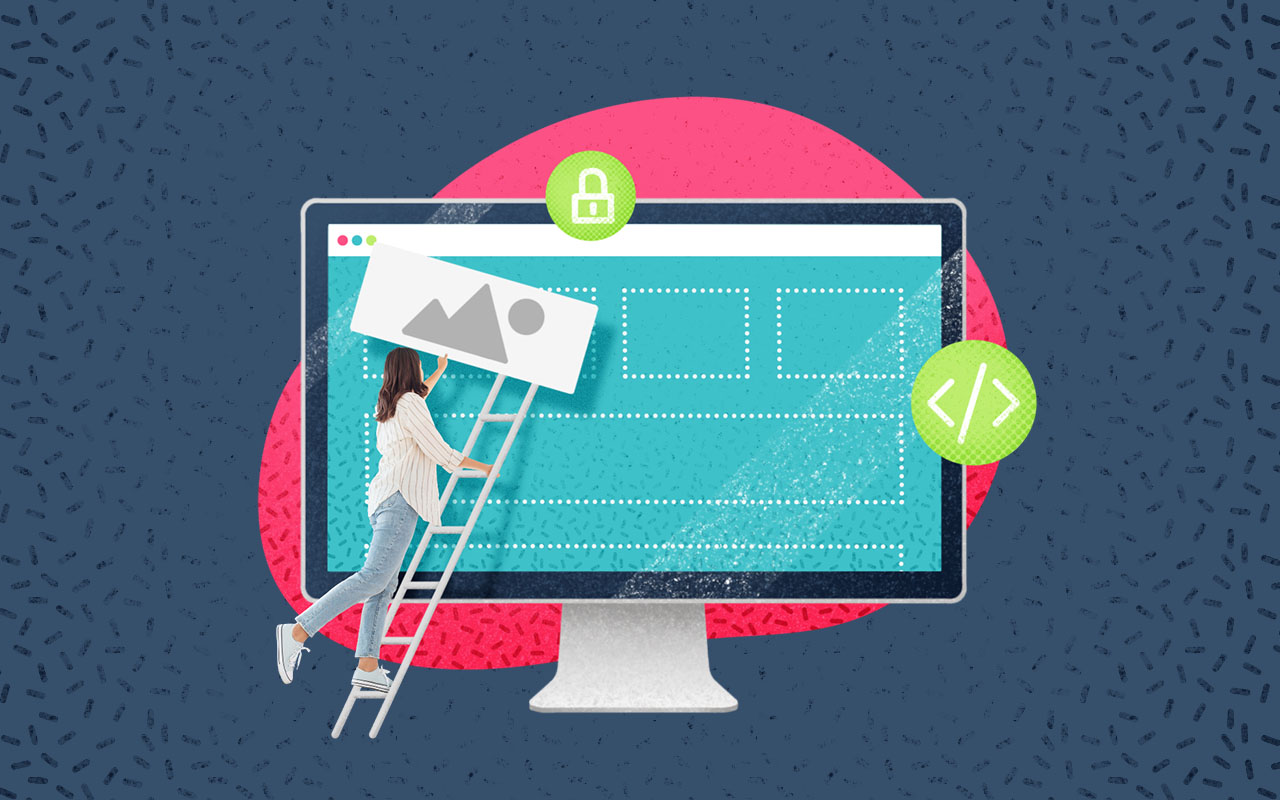Low-code solutions promise—and deliver—unprecedented speed in developing and deploying IT services, a dream come true for many organizations craving efficiency and agility. Yet, here lies a twist: speed, the very essence of low-code, often seems at odds with another critical IT cornerstone—security. In this blog, we’ll dive into the dynamic world of low-code ITSM platforms, exploring how they revolutionize IT service management by enabling rapid application development, while also tackling the elephant in the room: maintaining robust security in the fast lane.
Traditional ITSM platforms, while robust, often present challenges in terms of customization, flexibility, and speed of deployment. This is where low-code ITSM platforms step in, promising to revolutionize the way businesses manage their IT services by enabling rapid development and deployment of applications with minimal hand-coding. Let’s explore what low-code ITSM platforms enable companies to be able to do, and what to look for from vendors to keep third-party integrations secure and protect your data.
The Rise of Low-Code ITSM Platforms
Low-code development platforms empower organizations to create applications through visual interfaces and configuration, significantly reducing the need for manual coding. These platforms provide a user-friendly environment where IT teams can design, customize, and deploy applications quickly, without the need for deep programming expertise.
The Importance of Low-Code in ITSM
- Speed and Agility: One of the primary advantages of low-code ITSM platforms is the ability to rapidly prototype, develop, and deploy applications. This agility enables IT teams to respond swiftly to changing business requirements, accelerating time-to-market for critical IT services and solutions.
- Customization and Flexibility: Low-code platforms offer extensive customization capabilities, allowing organizations to tailor ITSM solutions to their specific needs and workflows. Whether it’s automating incident management processes, streamlining change management workflows, or enhancing service request fulfillment, low-code platforms empower businesses to adapt and evolve their ITSM strategies quickly.
- Cost-Efficiency: Traditional software development cycles can be time-consuming and resource-intensive. Low-code platforms reduce development overhead by minimizing the need for extensive coding, testing, and debugging. This efficiency not only reduces development costs but also frees up IT resources to focus on strategic initiatives that drive business value.
Cautions for Security in Low-Code ITSM Platforms
Low-code ITSM platforms offer a compelling solution for organizations seeking to enhance the agility and efficiency in managing IT services. By enabling rapid development and deployment of customized applications, low-code empowers IT teams to meet evolving business demands with speed and flexibility. However, organizations must prioritize data security throughout the low-code development lifecycle by implementing robust measures to mitigate potential risks and safeguard sensitive data within the network. While low-code ITSM platforms offer numerous benefits, organizations must be mindful of potential security risks associated with rapid application development and deployment.
- Data Security and Privacy: Rapid development cycles can sometimes prioritize speed over security, potentially leading to oversight in data protection measures. Organizations must ensure that low-code applications adhere to stringent security standards, especially when handling sensitive information such as customer data, financial records, or proprietary business insights.
- Vulnerability Management: The accelerated pace of application development in low-code environments may increase the likelihood of introducing vulnerabilities into ITSM solutions. Regular security assessments, code reviews, and vulnerability scanning are essential to identify and mitigate potential security weaknesses before they can be exploited by malicious actors.
- Integration Risks: Low-code ITSM platforms often rely on integrations with external systems and services to extend functionality. However, each integration point represents a potential security risk, especially if proper authentication, authorization, and data encryption measures are not implemented. Organizations should conduct thorough security assessments of third-party integrations to ensure they meet robust security standards.
- User Access Controls: The accessibility and ease of use inherent in low-code platforms may result in lax user access controls, leading to unauthorized access or privilege escalation. Implementing robust access control mechanisms, including role-based access controls (RBAC) and multi-factor authentication (MFA), is crucial to prevent unauthorized users from tampering with ITSM applications or sensitive data.
How to Keep Low Code Platforms Secure and Avoid Cyber Attacks
Securing low-code platforms and mitigating the risks of cyber-attacks is essential for maintaining the integrity and confidentiality of sensitive data in your network. Implementing these security best practices will enhance the security posture of your low-code platforms, while minimizing the risk of cyber-attacks. Here are some key strategies to help keep your low-code ITSM platforms secure:
- Secure Development Practices – Be sure to follow the secure coding practices and guidelines provided by the low-code platform vendor. When onboarding new ITSM software, ensure that your developers receive the training they need on secure coding practices (e.g., input validation and proper error handling). Make sure to schedule regular reviews of the code and the security protocols you have in place to identify and remediate potential vulnerabilities in low-code applications.
- Access Controls – Utilize role-based access control (RBAC) to assign permissions to users based on their roles and responsibilities—restricting privileges based on the principle of least privilege. A good place to start is by implementing multi-factor authentication (MFA) for an added layer of security for user authentication.
- Secure Configuration Management – Disable any unnecessary services, ports, and features. Regularly update and patch the low-code platform and associated components to address any known vulnerabilities. Your focus here should be on implementing secure configuration management practices that could expose your ITSM platform to security risks.
- Monitor and Log Activities – With comprehensive logging and monitoring capabilities, you can track user activities (e.g., unauthorized access attempts), system events, and potential security incidents. Set up system notifications so your team can promptly respond to IT security incidents in real-time.
- Secure Integration Points – Configure and authenticate integrations with external systems and services to prevent unauthorized access and data leakage—looking at implementing encryption and data masking techniques. TIP: For the third-party apps you integrate into your low-code ITSM platforms, regularly review and audit them to ensure they meet your company’s security standards and compliance requirements.
- Security Testing – Utilize dynamic application security testing (DAST) tools to simulate real-world cyber-attacks and identify any vulnerabilities that may not be detected by static analysis. Vulnerability scans and penetration tests can help you identify and remediate security vulnerabilities in your low-code platform and applications.
- Incident Response and Disaster Recovery – In a cyber emergency, you’ll need an incident response plan (IRP) ready, so you respond appropriately. Get ahead of the curve and carve out the time now to develop your IRP. Establish procedures for incident detection, reporting, containment, eradication, and recovery to minimize the impact of security breaches.
Performing Security Checks of Third-Party Integrations
Conducting security checks of third-party integrations is crucial to ensure that they meet your organization’s security standards and do not introduce vulnerabilities or risks into your environment. First start by researching their reputation and track record of the third-party vendor. Analyze their customer reviews, testimonials, and references from other organizations that have used the integration. By following these steps below, you can conduct comprehensive security checks of third-party integrations to mitigate risks and ensure the security of your organization’s systems and data.
- Review Vendor Documentation – Review all the documentation provided by the third-party vendor and look for information on their security practices, compliance certifications, and any security assessments or audits they may have undergone. Also check to see if they’ve published security whitepapers or best practices on their integration offerings.
- Evaluate Authentication and Authorization Mechanisms – Examine how the third-party integration handles authentication and authorization protocols to prevent unauthorized access to sensitive data or resources. Also ensure that it supports secure authentication mechanisms such as OAuth 2.0 or OpenID Connect.
- Assess Data Encryption and Transmission – Does the integration encrypt data both at rest and in transit? If it does, ensure that it utilizes strong encryption algorithms and protocols to protect data confidentiality—verify that it supports secure communication protocols (e.g., HTTPS/TLS for data transmission over networks).
- Review Data Handling and Privacy Controls – Evaluate how the integration handles and stores critical data—make sure it follows data protection best practices and complies with relevant privacy regulations (e.g., GDPR and CCPA). Does it provide features for data anonymization, pseudonymization, or data masking to protect sensitive information?
- Perform Security Testing and Vulnerability Assessment – Conduct security testing and vulnerability assessments of the integration (i.e., penetration testing and vulnerability scanners) to identify any weaknesses before you use the integration. Common security vulnerabilities to test for are: SQL injection, cross-site scripting (XSS), and insecure direct object references (IDOR).
- Check Compliance and Regulatory Requirements – Ensure that the third-party integration complies with your industry-specific security standards and regulatory requirements (e.g., HIPAA or PCI DSS).
- Establish Contractual and SLA Requirements – Include security requirements and expectations in the contractual agreement with the third-party vendor. This includes defining terms related to security assurances, data protection, incident response, and compliance obligations. You can also specify service-level agreements (SLAs) for security-related incidents, response times, and resolution procedures.
EasyVista’s suite of ITSM solutions leverage a low-code environment and ITIL processes to enable faster deployment, higher user adoption, and quicker investment returns. While our solutions integrate with well-known companies such as Zapier, Azure, Okta, Salesforce, Dell Kace, and more, you should still make sure you do your due diligence when selecting which third-party applications to connect to your ITSM platform.

